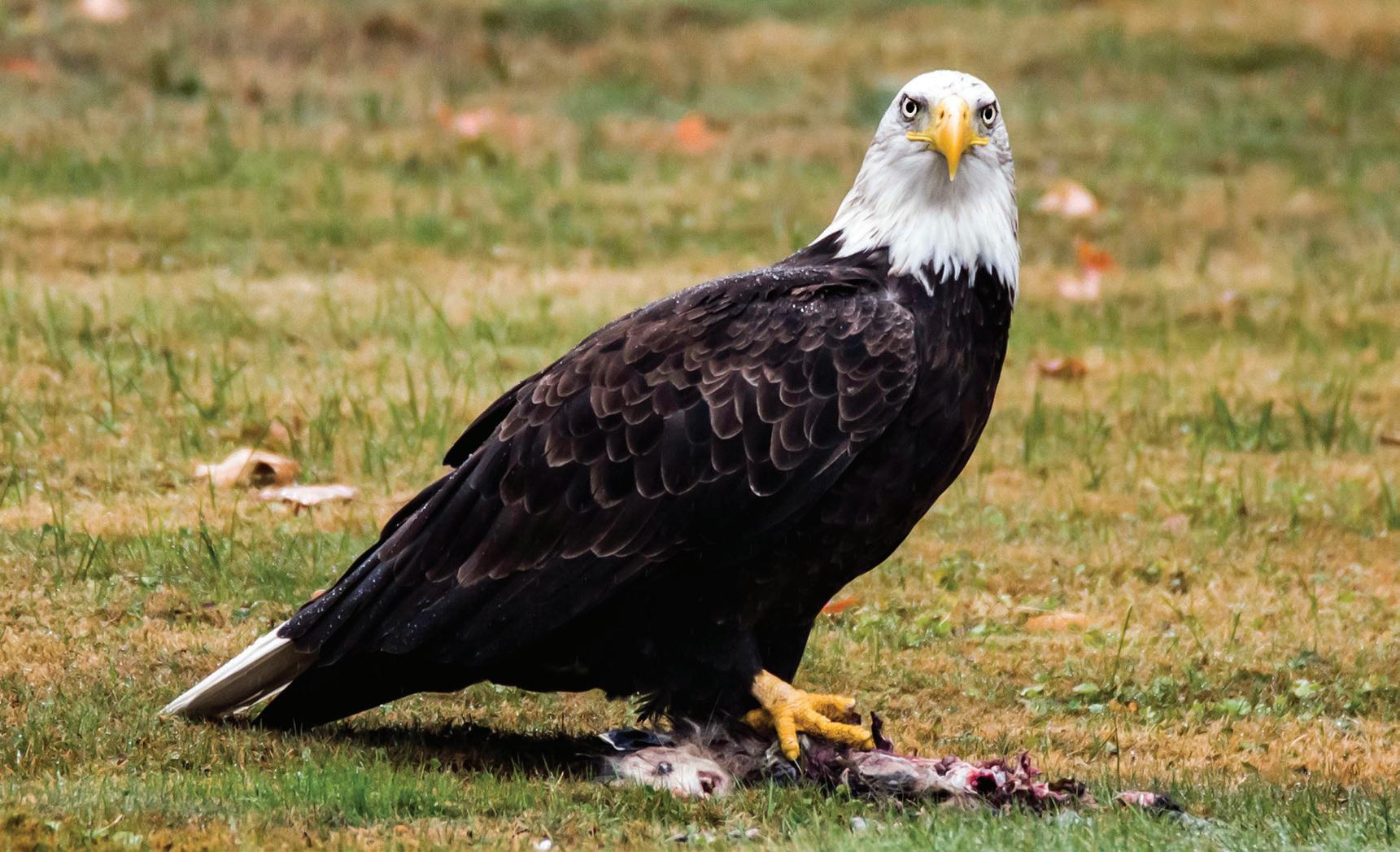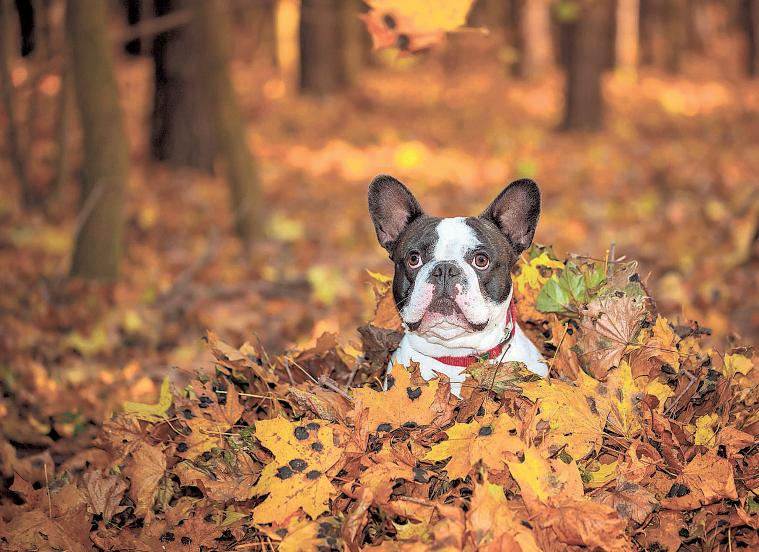
5 minute read
Cover Story
FILE PHOTO/PAUL KAPTEYN
Taking flight
Advertisement
Bald eagles are soaring in Worcester County
VEER MUDAMBI
While 2020 has been a barrage of negative headlines and personal loss, there are still measures by which it could be considered a success. The Commonwealth’s bald eagles are nesting in areas where they hadn’t been seen in over 100 years. Nests have been recorded in at least 14 towns throughout Worcester County.
Back in May, the Massachusetts Fish and Wildlife Department announced that 2020 had been a great year for the iconic birds. For Dianne Davis, this has been almost 40 years in the making. Along with her husband, Bill, she worked in the program to reintroduce the eagles to Massachusetts.
When the first set of eaglets or baby eagles was successfully fledged (left the nest) in 1989, a reporter from the Telegram asked how many breeding pairs they could expect in Massachusetts. Bill said they were hoping for about 10 if they were lucky. Now, she said, in 2020 there are more than 80 breeding pairs.
“These are fantastic results,” said Davis, who currently lives in Grafton. The project went from 1982 to 1988. Eaglets were brought in from nests in Maine and Canada, where they were raised by the attendants until they were 12 weeks old. At that point, they were fitted with transmitters and a color-coded band before being released at Quabbin Reservoir. A total of 41 fledglings were released over the course of the project – this process of relocation is known as “hacking.” As an Eagle Hack Site Attendant in 1985, she lived at Quabbin for three months feeding the chicks.
The first fledglings came from a breeding pair christened Betsy and Ross. Eagles breed at around 5 years old - producing usually two to three eggs, or a clutch. They are traditionally thought to mate for life, with both parents caring for the young; however it’s not unknown for a male to mate with more than one female and help care for multiple nests, said Davis.
The fledglings will stay with the parents until they are about 5 months old. The first few years away from their parents are extremely dangerous and mortality is around 50%, according to the U.S. Fish and Wildlife Service.
Though no more birds were brought in after 1988, they have been monitored closely down through the generations. While juveniles will – and have – widely dispersed, eagles have high “nest fidelity,” meaning they return to the same nesting area every year, often the same nest. This helps researchers keep tabs on breeding pairs, and when the chicks are about 6 weeks old, project workers would climb into the nest to place a band and transmitter on the chicks, weigh them, “then return them to the nest with a fish or two,” Davis explained.
Martha Gach, education manager and conservation coordinator at Mass Audubon’s Broad Meadow Brook sanctuary in Worcester, is on the Shrewsbury Conservation Commission and has seen this banding of eagle chicks. “It’s good to have these creatures back because they are part of our biofauna,” said Gach. The Shrewsbury nest is located on Lake Quinsigamond and the resident eagle pair are something of a local celebrity couple - regularly attracting visitors during nesting season who watch them from boats on the lake.
The eagle population dropped dramatically due to habitat loss from massive tree clearing operations throughout New England during the early 1900s. Following pollution from DDT pesticides in the 1960s, the national bird was extirpated in Massachusetts as well as much of the region.
DDT worked its way up the food chain, from the insects it was aimed at to the fish that ate the insects. It was then passed on to the birds that preyed on the fish such as ospreys, loons and bald eagles. The chemical caused eggs to be formed with soft shells that were crushed when the parents tried to incubate them.
Bald eagle photographed in Leominster

KRISTEN LECLAIR/ KRISTEN LECLAIR’S PHOTOGRAPHY, LUNENBURG

Left, Dianne Davis puts eagle chicks in an artificial nest box at Quabbin Reservoir in 1985.
BILL BYRNE, MASS WILDLIFE
Above, a bald eagle with its prey.
KRISTEN LECLAIR/KRISTEN LECLAIR’S PHOTOGRAPHY, LUNENBURG
GET YOUR SMILE BACK! DON’T SUFFER FROM BROKEN-DOWN OR MISSING TEETH!

DENTAL
IMPLANT
SPECIAL*
INCLUDES CT SCAN, TITANIUM IMPLANT, CUSTOMABUTMENT AND PORCELAIN CROWN $2,99999 FREE
*Exclusions Apply DENTAL
IMPLANT CONSULT ($200 VALUE)
As a conservation success story, Gach agrees that the eagles should be celebrated. “Their return is a step forward on a path towards a more balanced ecosystem.”
The bald eagle is a bird of prey (raptor) and occupies a position at the top of the food chain. However, the reintroduction of one species, even one as iconic as the bald eagle, Gach cautioned, is still just that - one step. Environmentalists should be wary of conflating charisma with ecological impact.
Conventional wisdom says that predators play an important role in an ecosystem by controlling the population of the animals they hunt. As predators, Gach said, eagles will “certainly be putting some pressure on prey species” but they are not the only thing keeping these animals in check, they’re part of it.

Eagles will always hold a special significance for most people beyond naturalists. “It’s never ‘oh yeah, I saw an eagle, big deal.’ People are so excited to see them back,” said Davis. “When they see them, they just can’t believe it.”
An animal with uniquely broad appeal, the eagles can serve to not only raise awareness of environmental issues but as an example of the resiliency of nature and endangered species, especially when given proper protections.
Eagles have now spread throughout New England, thanks to the Massachusetts project, expanding to Connecticut and Rhode Island.
“They’ve been given a chance to come back, and they’ve taken the opportunity to do it,” said Davis.


FALL IS HERE! WE’RE HERE TO HELP WITH YOUR FALL CLEAN-UP. CALL NOW!
Dr.SalmanDr.Salman Khanani Khanani 1084 Main St., Holden |khananidental.com | @khananidental *Some exclusions may apply: patient must be acandidate for dental implants and some patients may requirecomprehensive treatment plans to meet their individual needs. Special does not include the fee for extractions, bone grafts, sinus augmentation or the need for asurgical guide 508-829-4575 to book your appointment today!
Implant, Cosmetic and Family Dentistry
Fall Clean-ups. Leaf Removal, Trimming of Shrubs, Small Tree Removal, Gutter Cleanings and More.











